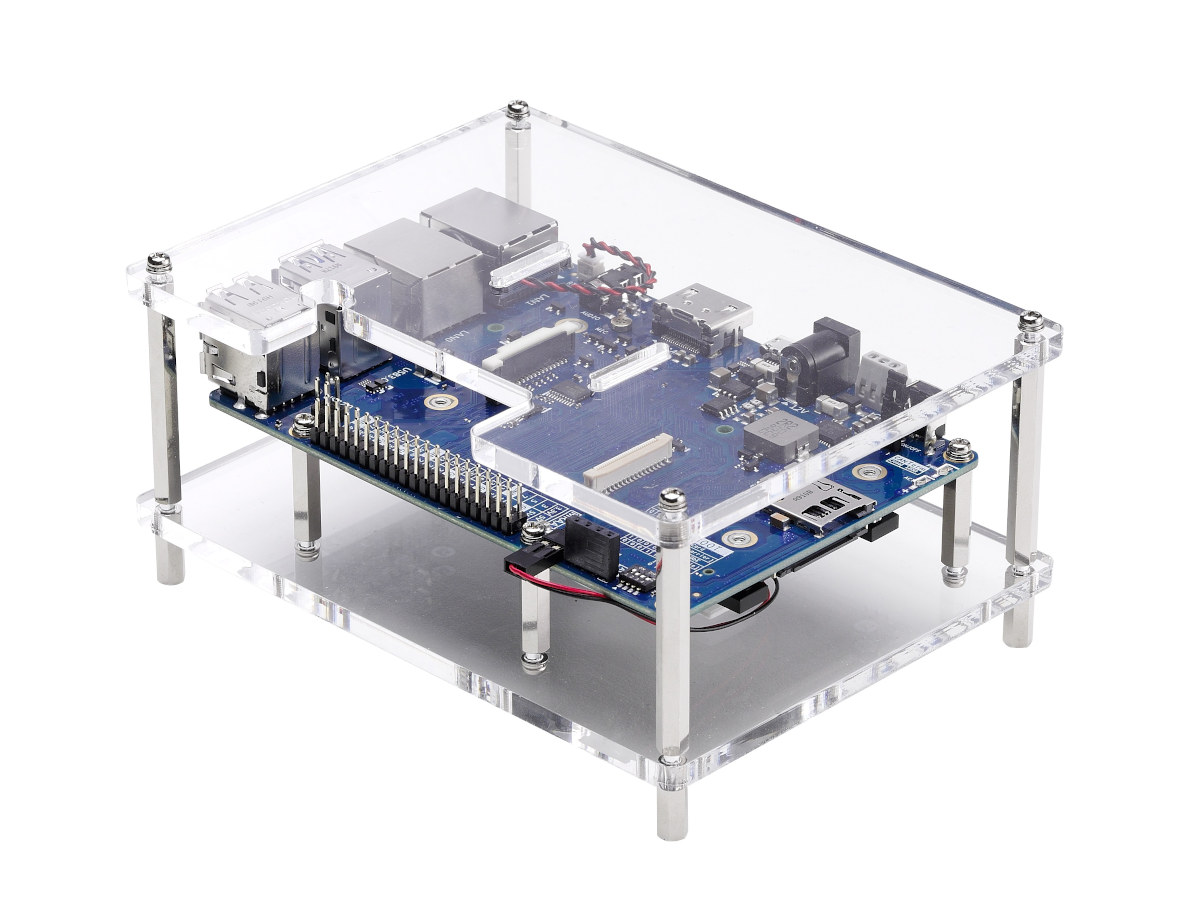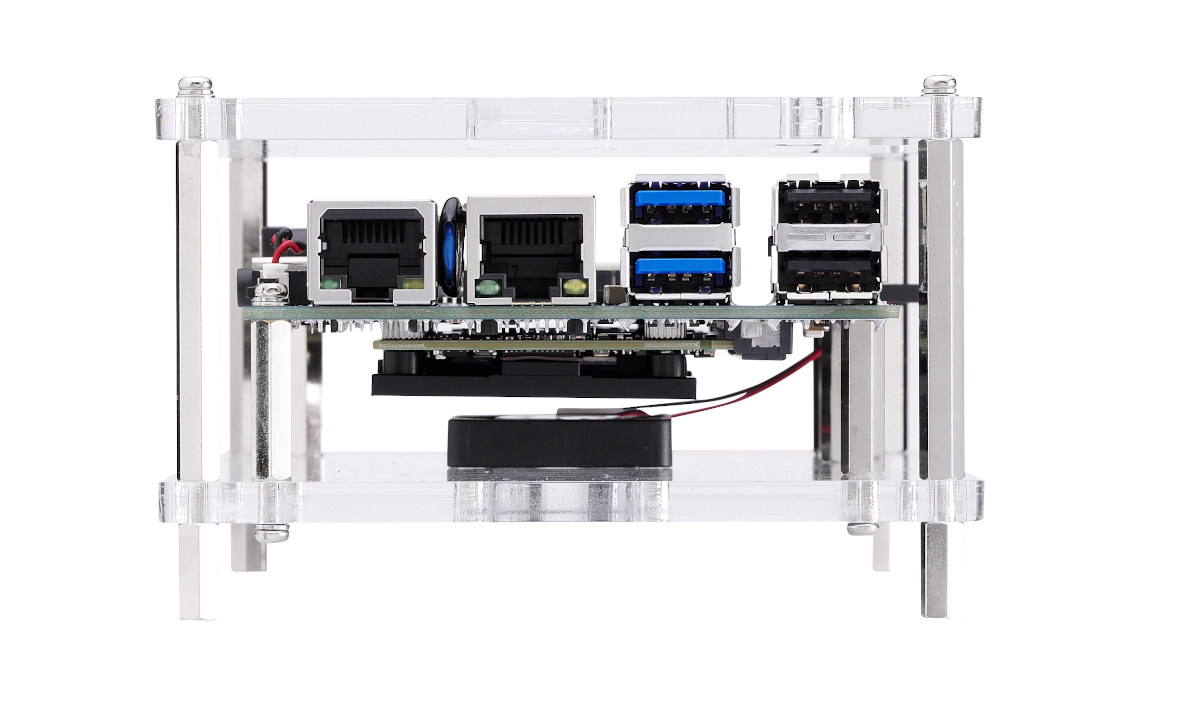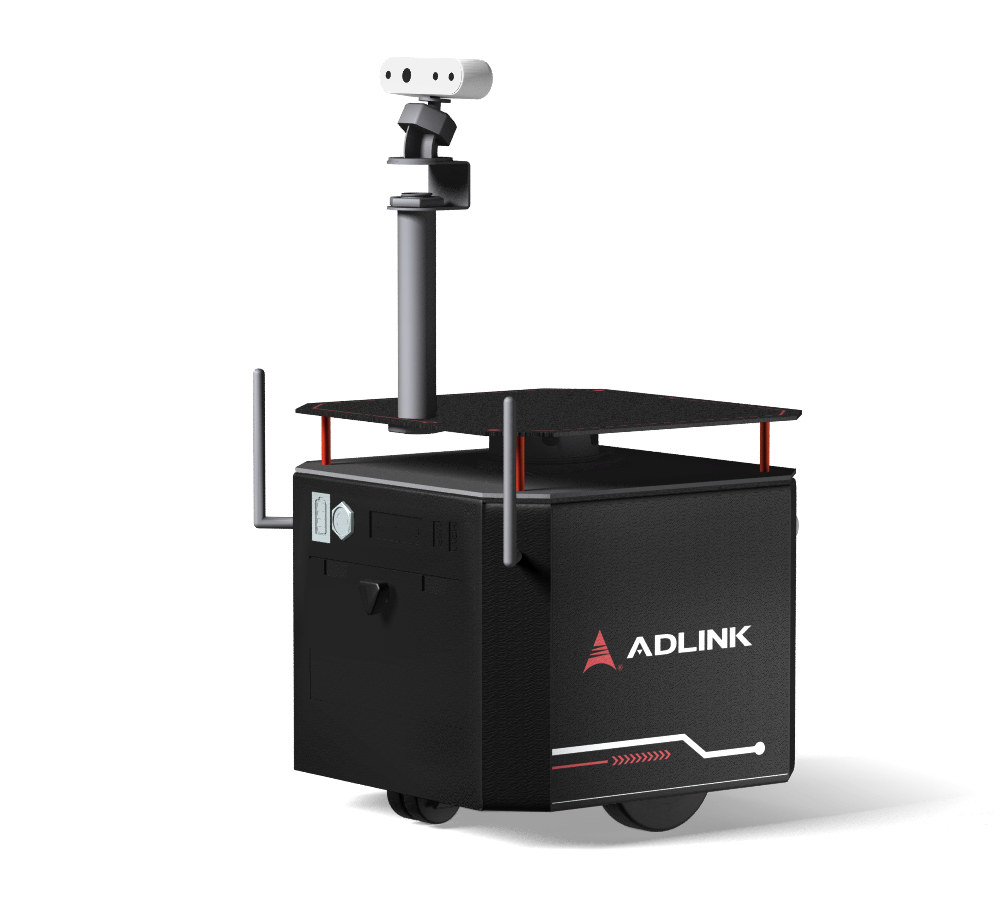ADLINK has launched ROScube Pico SBC designed for robotics projects and powered by either an Intel Atom x5 Apollo Lake processor or a Rockchip PX30 Arm Cortex-A35 processor via their SMARC-compliant system-on-modules namely LEC-AL and as LEC-PX30.
Both models run Ubuntu and ROS/ROS-2 operating systems simultaneously, and the company also provides NeuronBot robotics development and demo kit based on the SBC.
ROScube Pico SBC and Devkit

Those are the specifications listed for ROScube Pico:
- SMARC Module
- For ROScube Pico NPS-1 – LEC-AL with Intel Atom processor, Intel Movidius Myriad X AI accelerator, 8GB LPDDR4 RAM, 32GB eMMC
- For ROScube Pico NPS-4 – LEC-PX30 with Rockchip PX-30 quad-core Cortex-A35 processor, 2GB DDR3L RAM
- Storage – Optional 32GB Micro SD card
- Video Output – 1x HDMI, 1x DSI
- Audio – Stereo headphone audio connector
- Camera I/F – 1x MIPI CSI camera interface
- Networking – 1x Gigabit Ethernet (See comments for some clarifications)
- USB – 2x USB 3.0 Type-A connectors, 2x USB 2.0 Type-A connectors
- Expansion
- 40-pin MRAA compliant header with 2x I2C, 12x GPIO, SPI, UART, 9x PWM
- M.2 E-key socket
- Misc – Power button, reset button,
- Power Supply – DC 12V +/- 5% input (24W AC/DC adapter provided)
- Dimensions – 118(W) x 81.8(L) mm
- Temperature Range – Operating: 0°~60°C; storage: -40~85°C
- Humidity -10%~90%, non-condensing
- EMI certifications – FCC Part 15B Class A
- EMC certification – EN 55032/55024
- Vibration
- IEC60068-2-6: 3G, 10-500Hz, 3 axes total, non-operational
- IEC60068-2-64: 1Grms, 10-500Hz, 1 hour/axis, operational
- Shock – IEC-60068-2-27; operating 50G, half-sine 11 ms duration

ADLINK provides Ubuntu 18.04 LTS for the board (not pre-installed), as well as ROS/ROS 2 robotics middleware, and the company’s Neuron SDK specifically designed for professional robotic applications such as autonomous mobile robots (AMR). Note ADLINK Neuron SDK is completely unrelated to AWS Neuron SDK.
NeuronBot

NeuroBot specifications:
- SoC – Intel Celeron G3900TE “Sky Lake” dual-core processor with Intel HD Graphics 510; 35W TDP
- System Memory – 4G DDR
- Storage – 64GB SATA SSD
- MCU – Arduino Mega 2560 AVR microcontroller
- Motor control
- 7N14P 2-channel Encoder
- DC Carbon-brush motor 1/139
- Sensors
- GY85 IMU with 3-axis Gyroscope, 3-axis Accelerometer, 3-axis Magnetometer
- 2D 360° RPlidar A1 with 12-meter range, 8, 000 Hz sample frequency, 1-10Hz scan rate; connected over USB and UART
- Camera – Optional RealSense depth camera D435 fitted to the robot with side stand bracket
- Video Output – 1x HDMI
- Networking – 2x Gigabit Ethernet ports
- Serial – 1x RS-232/422/485, 3x RS-232 via onboard headers
- USB – 4x USB 3.0 ports, 2x USB 3.0 onboard header, 1x USB 3.0 on vertical connector, 4x USB 2.0 ports
- Expansion – 10x GPIO via onboard feature connector, I2C
- Misc – Power button; Status LEDs for Stop, Tracking, Charging, and OF; battery status display
- Power Supply
- 12V DC ±5% via an ATX power connector
- Optional 22.2V/3300mAh LiPo Battery with XT60 Plug and LiPo Battery balance charger
- Mechanical specifications
- Payload – 3kg
- Wheel diameter – 83 ±2 mm
- Wheel center distance – 218 ±3 mm
- Translational Velocity – Max.0.6m/s
- Rotational Velocity – Max.0.6m/s
- Threshold of Climbing – 0 +/- 1° deg
- Dimensions – 260 x 270 x 260 mm
- Weight – 8.3kg
- Temperature Range – Operating: 0°C to 50°C; storage: -20°C to 80°C
- Humidity – 10%~95%, non-condensing
- EMC – Compliant with CE, FCC Class B
- Vibration – Package random vibration: IEC 60068-2-64, 5-500Hx, 5Grms, 60 min/axis
- Drop – ISTA-1A
The hardware is fairly different from the ROScube Pico SBC, but it can still be useful to get familiar with Neuron SDK, and the company explains it could be used as a STEM platform for research, training, and educational activities. Some resources have been pushed to Github to get started with SLAM and other features.
Price, Availability and More Info
Pricing has not been disclosed, and availability is unclear with the product page for ROScube Pico SBC showing “preliminary” and the one for NeuronBot reading “NEW”. A few more details may also be found in the press release, where ADLINK also promotes robotic solutions for “enterprise users” as opposed to the “development users” board and robot described in this blog post.
Via LinuxGizmos

Jean-Luc started CNX Software in 2010 as a part-time endeavor, before quitting his job as a software engineering manager, and starting to write daily news, and reviews full time later in 2011.
Support CNX Software! Donate via cryptocurrencies, become a Patron on Patreon, or purchase goods on Amazon or Aliexpress





Specs indicate: Networking – 1x Gigabit Ethernet. So what is the other connector that is similar to RJ45 used for? Is it for serial access?
I think it’s for the Intel version only. Based on the specs for “Vizi-AI Development Starter Kit”:
The Arm version should have two ports but limited to Fast Ethernet based on i-Pi devkit specs:
So it must a mistake in the specs for ROScube Pico because they show 1x Gigabit Ethernet for both models.